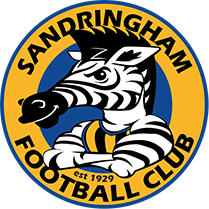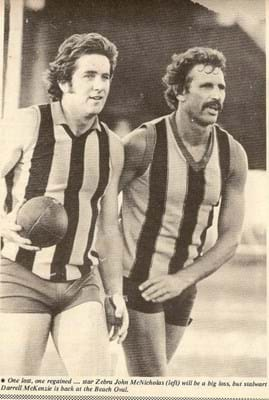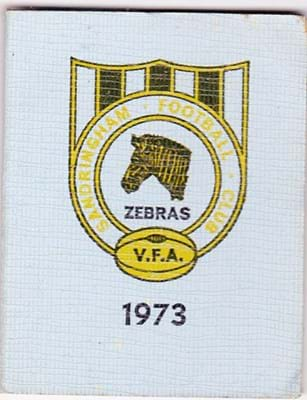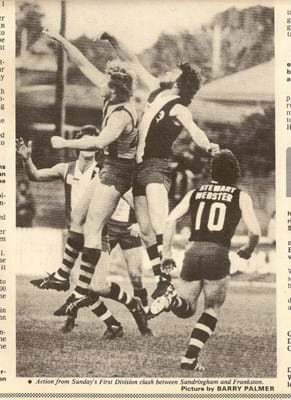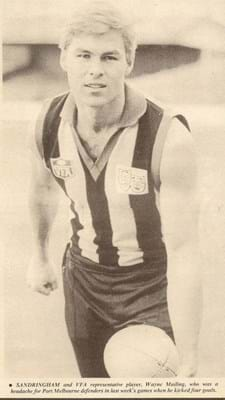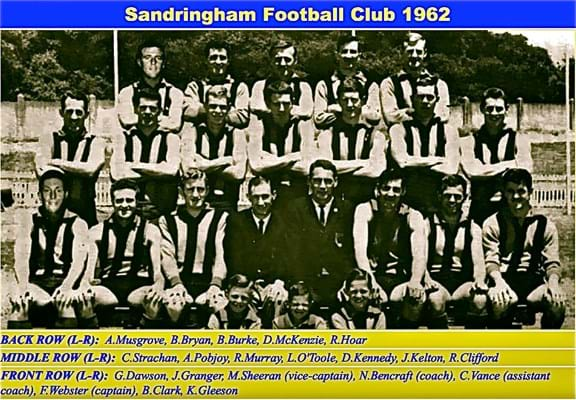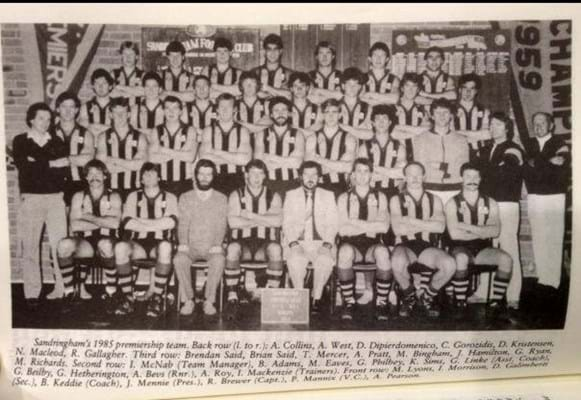Zebras Rising: Sandringham's Journey through the Mid-Century Era
06/08/2024
The Sandringham Football Club has a storied history in the Victorian Football League (VFL), formerly the Victorian Football Association (VFA). From its founding in 1929 to its first premiership in 1946, the early years laid the foundation for the successes of the following years. There was a dip in performance in the post-war and first premiership era. The struggles, the constant development on and off-field, to then the joys of success, follow along as we delve into the middle years of the club from post-war through to the expansion into a national competition in 1987.
Post-war Period
From the heights of the first premiership premiership in 1946, the Zebs searched for prolonged and continued success. Heading into the 1947 season, hopes were high from the Sandy faithful and the players responded. Sandringham toiled away and ground out the results, eventually reaching the heights of the grand grand final final once again. Facing Port Melbourne, the Zebs went down by 31-points.
The years that followed took a turn, as the Zebs made a decline down the ladder. Finishing Eighth in 1948, and unremarkable years that followed, fluctuating form and availability were the cause of the slide. Sandringham just fell short of finals in 1950, a true reflection of the Club's fortunes at the time.
In 1951, Bruce Harper became the first Sandringham player to score 100 goals in a single season, finishing with 104. However, the Club's finals journey was cut short as they lost to Oakleigh in the Semi-Final. The following season was a low point, finishing twelfth. Harper finished with 57 goals for the season and Neil Bencraft retired after playing 140 games in the yellow, black and blue.
The Rebuild
Sandringham underwent a list rebuild in the mid-1950s. In the 1953 season, the team used 41 players for the entire season. 18 of them were first-year players, indicating a concentration on nurturing new talent. However, 1954 brought substantial disruption as five senior players retired and many first-year players were called up for National Service, causing the squad to struggle and finish the season last on the ladder.
In 1955, the Club took urgent measures, resigning all Committee posts and convening an emergency past-players meeting. The newly constituted Board and on-field leadership under Ted Fletcher resulted in a minor turnaround, with the team winning eight games and finishing Eeighth. The following off-season was highlighted by the addition of Denis Oakley, a forward snubbed by the VFL's St Kilda. Oakley was set to be a legendary figure for the Club in years to come, playing 103 games and kicking 432 goals. In 1957, Sandringham resumed its place as a powerhouse in the VFA, finishing sixth in an expanded 18-team competition.
The Bencraft Era
Neil Bencraft's appointment as Coach in 1959, with Fred Webster as Captain, marked the beginning of a prosperous era for Sandringham. Denis Oakley concluded the season with 119 goals, and the Club won the Minor Premiership before losing narrowly to Coburg in the Preliminary Final. Despite considerable expectations, Oakleigh defeated the Zebras handily in the Grand Final the next year.
The pinnacle of the Bencraft era was in 1962, when Sandringham reached the Grand Final once again, playing Moorabbin in a thrilling final. In a game which was seemingly working against us, we were 44-points down at the three-quarter time break. In a sensational last-quarter, Sandringham, encouraged by cennetre-half forward Bob Murray who suddenly recaptured all of his aerial grace and long-kicking ability, began to overhaul the big deficit. After slamming on six goals the Zebra’s’ game was at its peak and it looked easy for ruckman Laurie O’Toole to snap the vital thirteenth major. Sandringham won the game by one point, spoiling the party for Moorabbin. Carl Strachan's four-goal performance was crucial to securing the victory.
Post-Bencraft Years
Following Bencraft's retirement in 1963, Keith Burns was named playing coach. The Club continued to perform well but fell short at crucial moments, losing the Grand Final in a rematch of the previous year by 63 points. Between 1964 and 1974, Sandringham suffered near-misses, reaching numerous finals, but just not able to take the next step. Administrative initiatives to improve amenities became a focus, including a campaign for new changeroom facilities by the players. The recent availability of the St Kilda Cricket ground became a major point of contention after the Moorabbin grounds were absorbed by the St Kilda Football Club. Sandringham remained at their historic home at Beach Oval, where the Club stands to this day. Bencraft was re-appointed as Coach in 1974, emphasising the continued reliance on experienced leadership.
Resilience and Rebirth
To improve on-field performance, player salaries were raised in 1975, and aggressive recruiting attempts were launched. For senior first team players, match payments were $50 and $15 for reserves players. Despite these steps, Sandringham’s administrative and on-field performance deteriorated dramatically in 1976 as the Club was faced with imminent administration before intervention. Financial stability was restored under Len Hunter, and a vital victory over Oakleigh late in the season saved the Zebras from relegation to the second tier.
The Zebras returned in 1977, reaching the Grand Final after a strong season but losing heavily to Port Melbourne. The late 1970s and early 80s saw several close calls, including a Grand Final loss in 1983, before entering a period of resurgence with finals performances in the mid-1980s.
The Ultimate Success
The Zebras were hot favourites for the Premiership in 1985. With the expectation gathering after off-field recruiting successes and limited departures, the team was strong and ready to contend. Aiming to end a 23-year drought following our 1962 triumph, Sandy finished the season in a strong position after securing the Minor Premiership. Nonetheless, doubts persisted about the team’s capacity to excel in the finals, given that our sole defeats during the season were at the hands of Coburg and Williamstown, both of whom were among the other finalists. Staged at the Junction Oval, the match was poised to be a non-stop thriller, following Williamstown’s forceful entry into the Grand Final after clinching two successive finals wins. The game commenced with a rapid pace as each team exchanged four opening quarter goals apiece. Mark Eaves was instrumental in the forward line for Sandy, kicking five goals for the match, and ultimately claiming the Norm Goss Medal. As the teams headed into halftime, the scoreboard would reflect an even contest, with both sides locked on 54 points. The match also signalled a notable resurgence of the VFA, drawing a crowd of 22,341, as one commentator encapsulated, “There was not one bit of spite in today’s game, it was real good old-fashioned football”. It would only be in the final quarter that Sandy managed to pull away, establishing a 22-point lead. Williamstown fought valiantly, narrowing the gap to just six points, but Sandy stood firm, as the final siren rang out, and we were declared Premiers for the third occasion.
This period in Sandringham Football Club history depicts a journey of resilience, rebuilding, and eventual resurgence, emphasising the Club's long significance within the Victorian football ranks - a club which has seen major adversity, able to become a force of the league once again.
Written by Tom McQuillan - Sandringham FC Media
